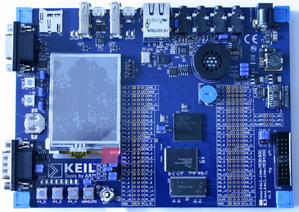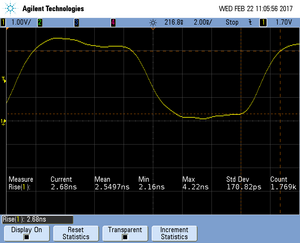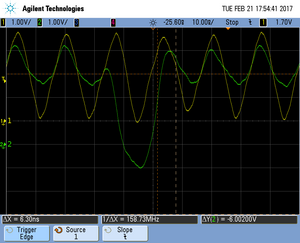Tracing on NXP LPC4357
Contents
This article describes how to get started with trace on the NXP LPC4357 series. This article assumes that there is already a basic knowledge about trace in general (what is trace, what different implementations of trace are there, etc.). If this is not the case, we recommend to read Trace chapter in the J-Link User Manual (UM08001). The NXP LPC4357 series implements tracing via pins only, so a J-Trace is needed to perform tracing on these devices.
Minimum requirements
In order to use trace on the NXP LPC4357 series devices, the following minimum requirements have to be met:
- J-Link software version V6.18c or later
- Ozone V2.46a or later (if streaming trace and / or the sample project from below shall be used)
- J-Trace PRO for Cortex-M HW version V1.0 or later
To rebuild the project our IDE Embedded Studio can be used. The recommended version to rebuild the projects is V6.30. But the examples are all prebuild and work out-of-the box with Ozone, so rebuilding is not necessary.
Sample project
Streaming trace
The following sample project is designed to be used with J-Trace PRO and Ozone to demonstrate streaming trace. The project has been tested with the minimum requirements mentioned above on a KEIL MCB4300 v1.2. The sample project comes with a pre-configured project file for Ozone that runs out-of-the box. In order to rebuild the sample project, SEGGER Embedded Studio can be used.
Note: The NXP LPC4357 MCU does not support traceclocks higher than 60 MHz due to hardware limits. The CPU clock can be set to 180 MHz, but then a functioning trace setup is not guaranteed.
NXP_LPC4357FET256_TraceExample_60MHz_TCLK.zip
Note: The example is shipped with a compiled .JLinkScriptfile, should you need the original source, please get in touch with SEGGER directly via our support system: https://www.segger.com/ticket/.
To create your own .JLinkScriptfile you can use the following guide as reference: How_to_configure_JLinkScript_files_to_enable_tracing
Specifics/Limitations
The LPC435x Productfamily has additional pins that can be used for tracing. Usually only 5 Pins are mapped to have the trace functionality. In this case however multiple pinout configurations are possible over different ports even. Should you be using our trace example make sure your physical tracepin connections are equal to the ones on the KEIL_MCB4300. If not adjust the pin initialization accordingly.
Tested Hardware
Reference trace signal quality
The following pictures show oscilloscope measurements of trace signals output by the "Tested Hardware" using the example project. All measurements have been performed using a Agilent InfiniiVision DSO7034B 350 MHz 2GSa/s oscilloscope and 1156A 1.5 GHz Active Probes. If your trace signals look similar on your trace hardware, chances are good that tracing will work out-of-the-box using the example project. More information about correct trace timing can be found at the following website.
Rise time
The rise time of a signal shows the time needed for a signal to rise from logical 0 to logical 1. For this the values at 10% and 90% of the expected voltage level get used as markers. The following picture shows such a measurement for the trace clock signal.
Setup time
The setup time shows the relative setup time between a trace data signal and trace clock. The measurement markers are set at 50% of the expected voltage level respectively. The following picture shows such a measurement for the trace data signal 0 relative to the trace clock signal.


